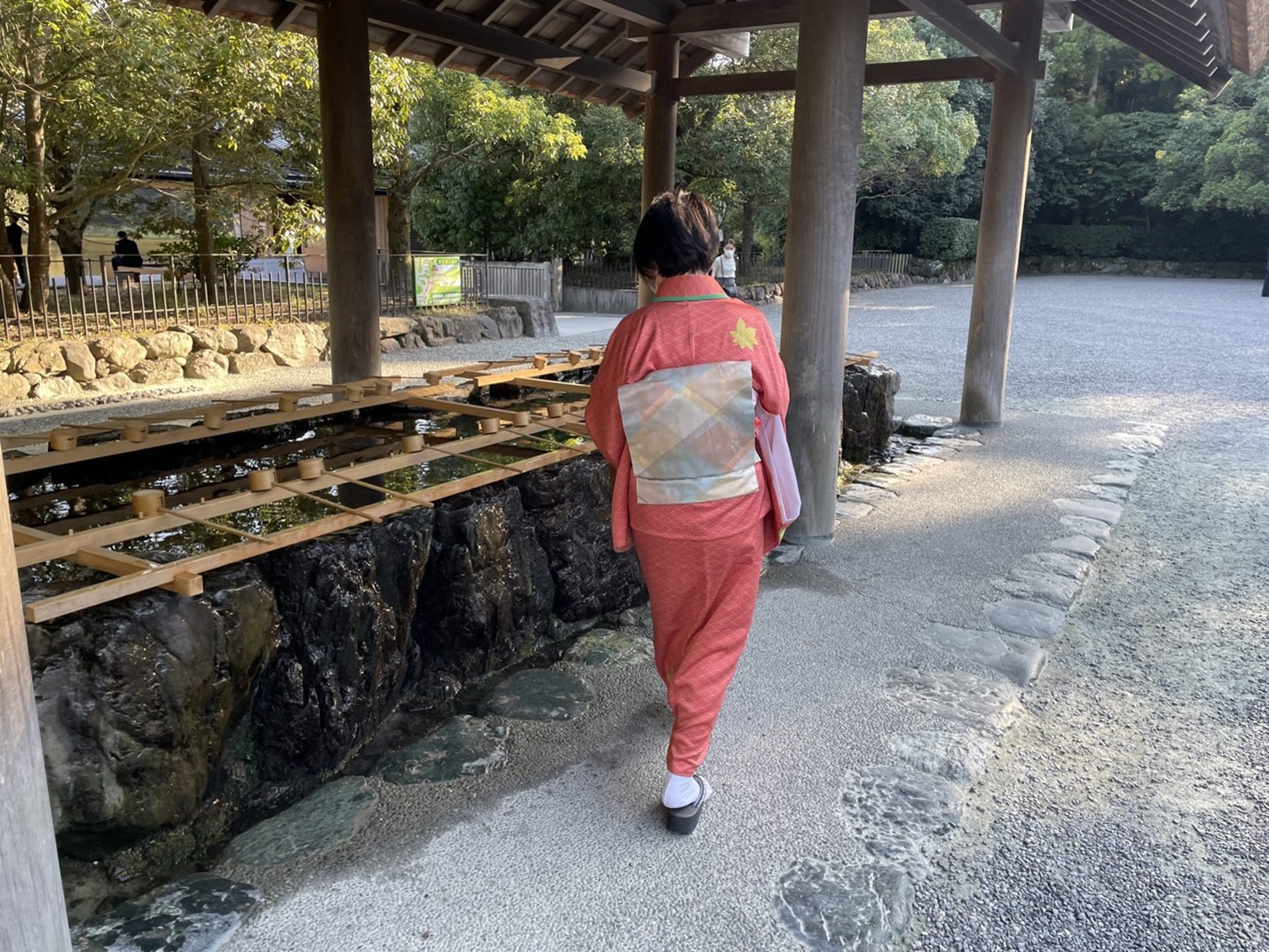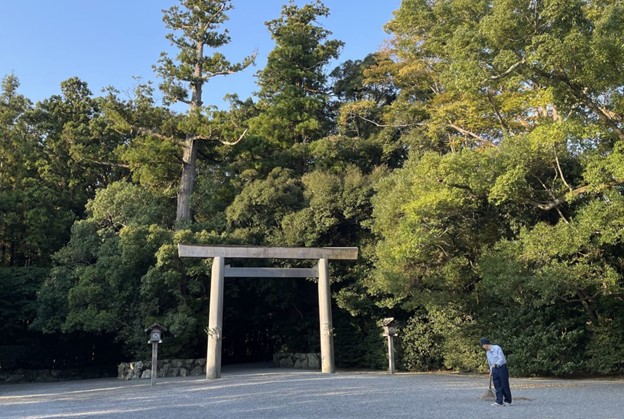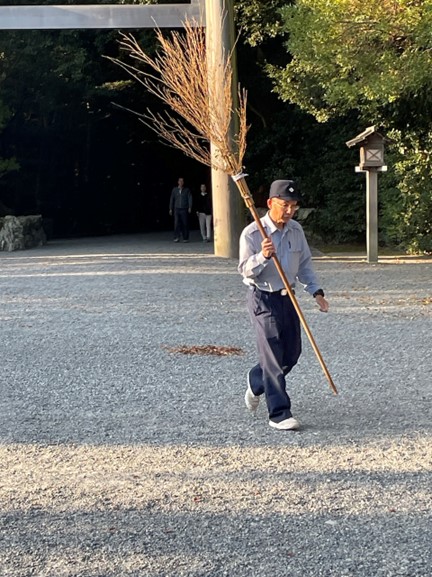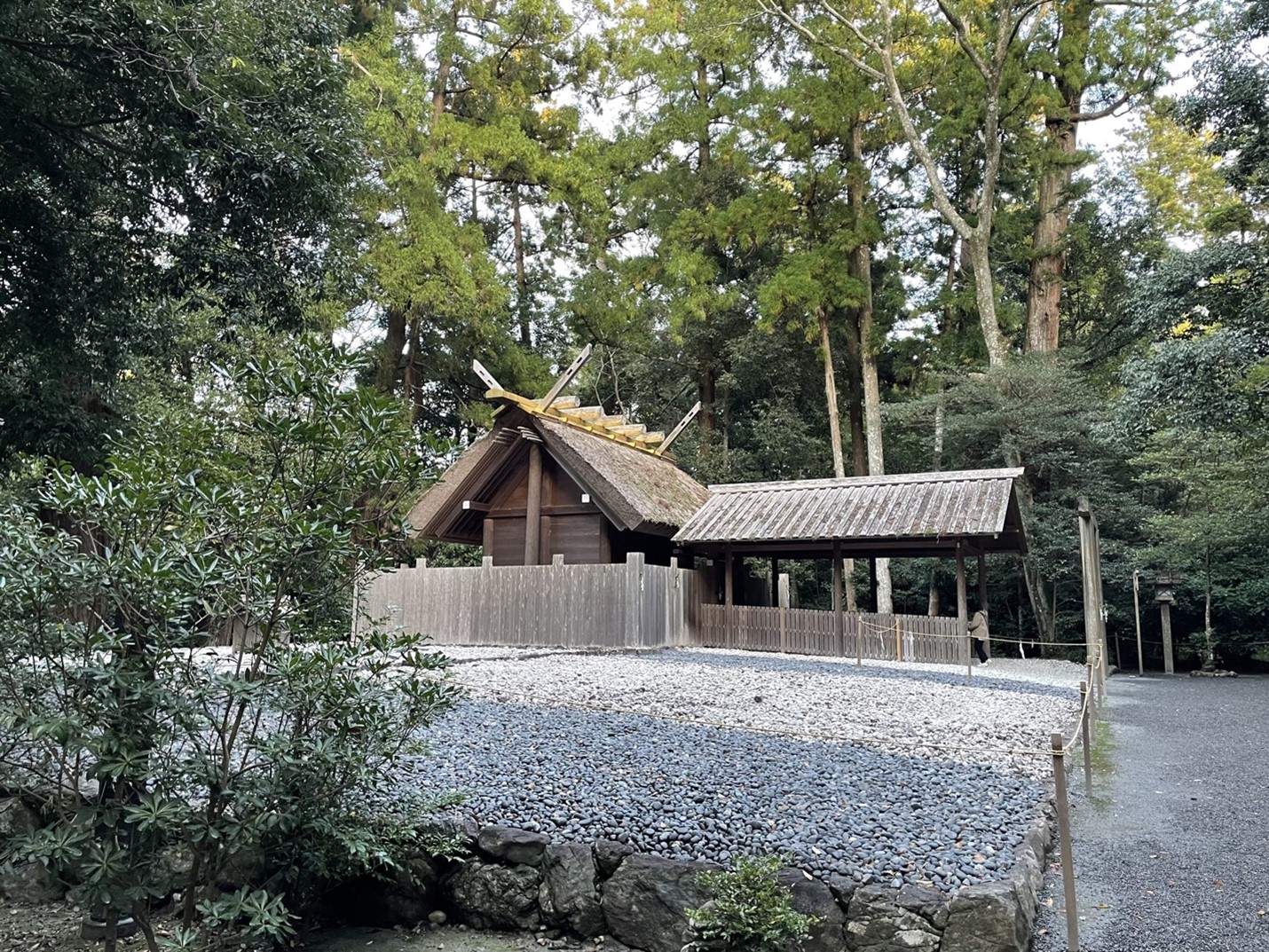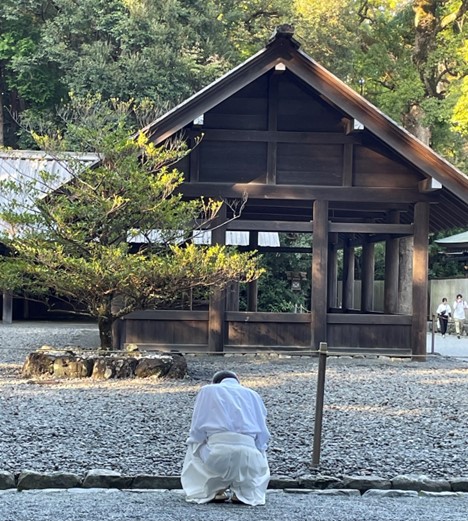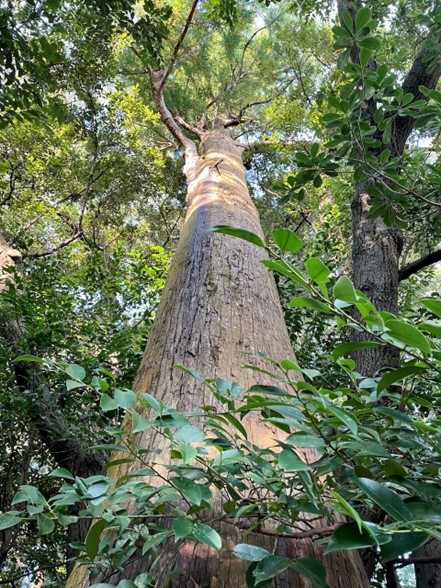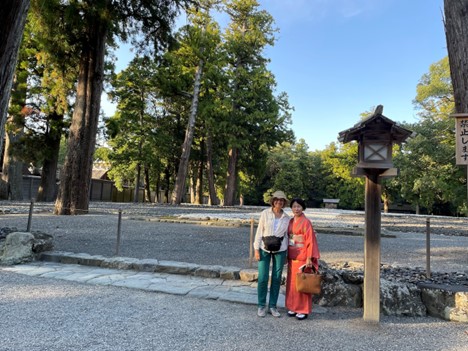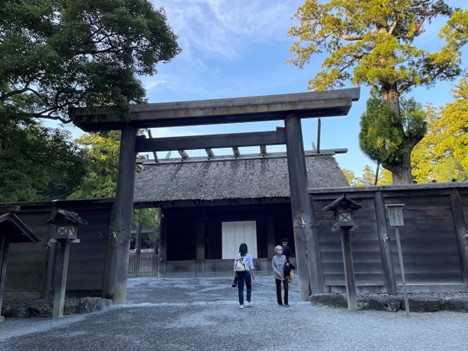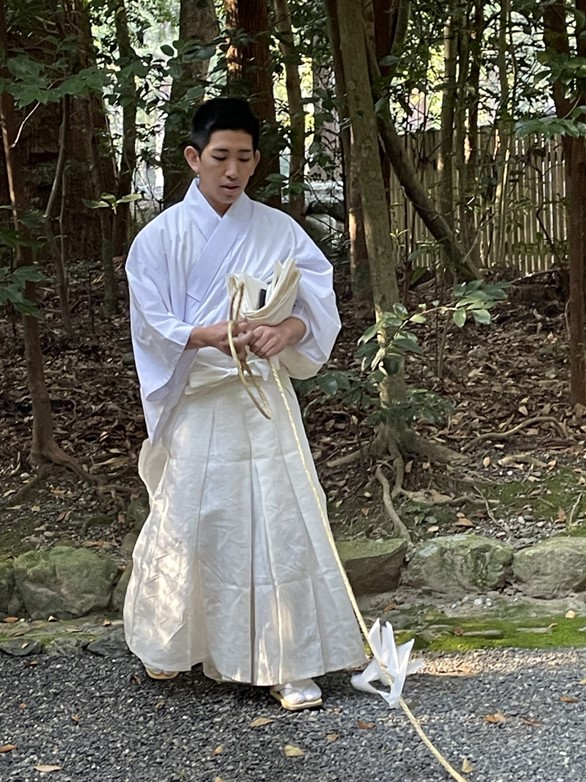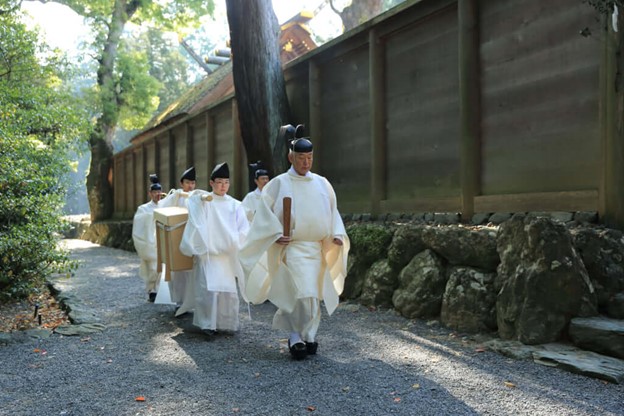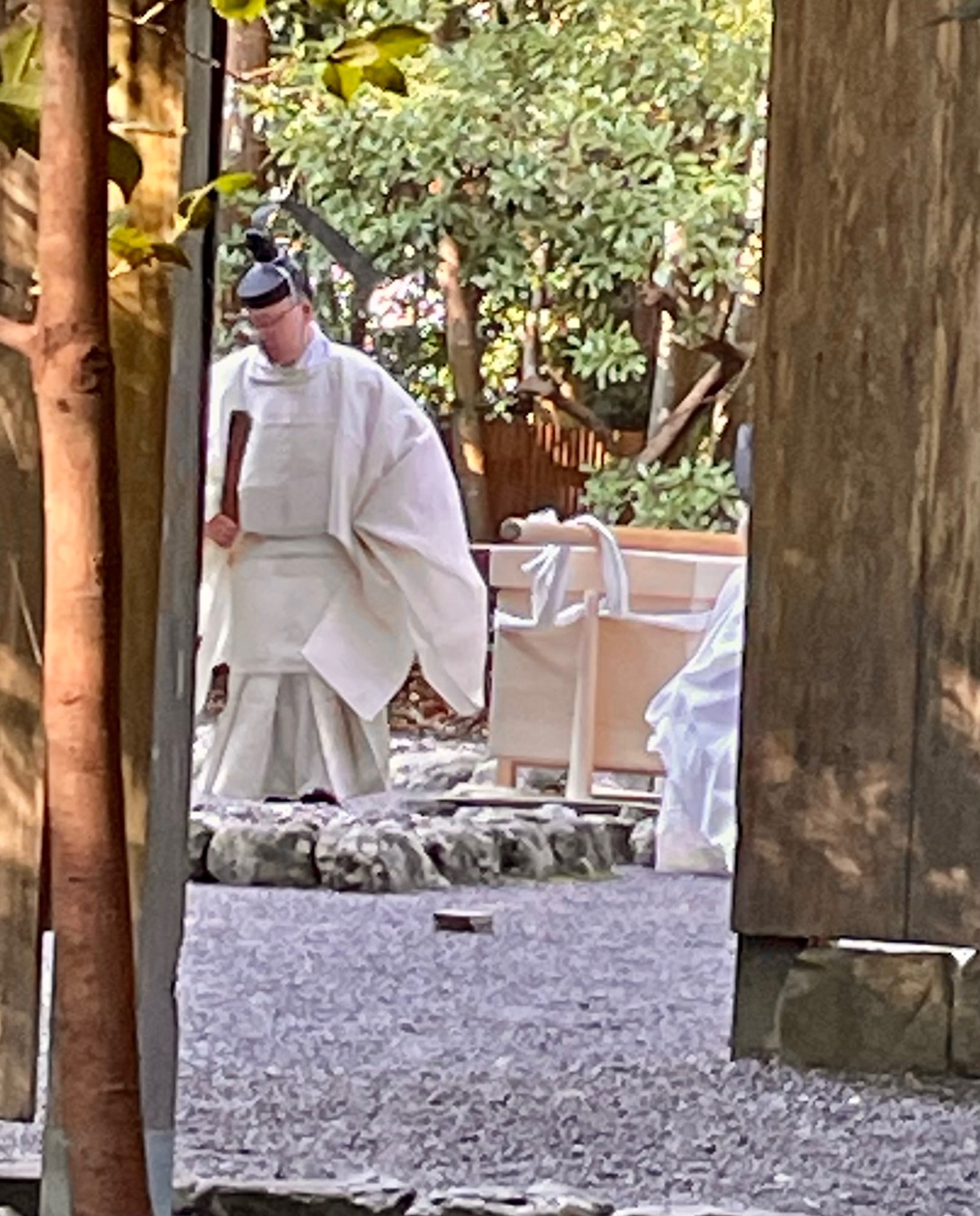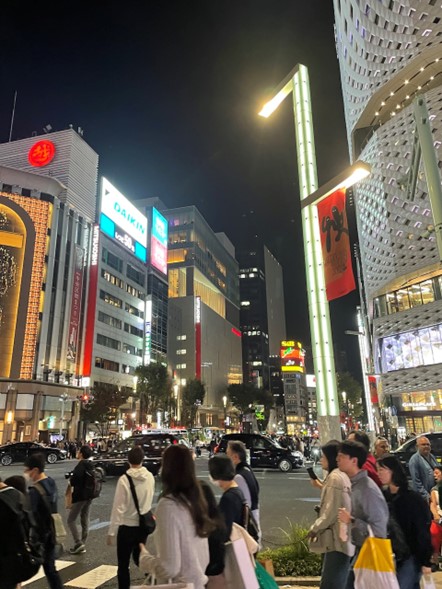.
.The Outer Shrine (Geku) in Ise City is also closely connected to the Imperial family. 500 years after the establishment of the Inner Shrine, emperor Yuryaku had a dream, where the goddess Amaterasu was asking him for food. He followed her request and built a shrine for the deity, Toyo’uke-no-Okami, who presides over the meals of the goddess Amaterasu and is the guardian of food, clothing, housing and industry.
.
.
.
.
Purification basin before entering the sacred area of the shrine with our guide Hisako-san
.
.
.
.
.
It is the harmony with nature which fascinated me most in the Inner and Outer shrines. Like this Torii you see in the photo, the construction is humble and in harmony with the natural environment. There is nothing much to see in these shrines except connectedness and deep reverence for life – isn’t that all we need?
.
.
.
.
Even the brooms used to clean the gravel walkways from fallen leaves are made in the ancient way.
.
.
.
.
.
This shrine is the dwelling place of the god of wind, Tsuchinomiya. The empty place beside the shrine is the location where the shrine will be rebuild in 2033.
.
.
.
.
Shinto priests are all dressed in white. White stands for purity.
.
.
.
/
Ancient, powerful Cedar Trees are growing in the shrine area.
.
.
.
.
.Hisako-san and I in front of the empty space where the main sanctuary will be rebuilt.
.
.
.
.
.
This is the entrance to the main sanctuary of Geku. Twice a day, priests offer food to Amaterasu and other kamis of the Jingu and pray for the well being of the Imperial family and the happiness of the entire world. For 1500 years, the ceremony of food offering is linked to strict rules and rituals and has not changed.
I was not allowed to take photos from inside the gate.
.
.
.
.
.
In the early morning, I got up and rushed to the place our guide was pointing to where the food procession would enter the main sanctuary. First, two men dressed in a blue uniform walked with great dignity to the place where the Shinto priest above closed an area with a rope.
The preparation of sacred food (Shinsen) for Amaterasu and all the kamis residing in Naiku and Geku requires a strict ritual. Before preparing the food, the priest has to take a ritual bath and stay for one night in seclusion. In the early morning, the priest makes a fire with an ancient wooden device just as they did in old times. The fire is called “pure fire”.
.
.
.
.
.
After a while, a small group of priests walked up a path, but I could not see them very well. (This photo is taken from the internet). Everything was done in silence. The group entered a wooden house behind a wooden fence.
.
.
.
,
,
The only view I got from the sacred food offering was a short glimpse through an open gate. I saw the priests and the wooden food carriage, which they lifted up. They disappeared again behind the fence.
We left Ise by car and arrived in Tokyo in the evening The contrast could not have been bigger. In the lounge of a Department store in the Ginza district, we were greeted by a robot called Paprika.
.
.
.
.
.
The robot, Paprika, was walking in the Lounge and came to us chirping, with flapping wings and rolling eyes, when we called his name.
.
.
.
.
Ginza district in the evening
My friend Kato-san (I got to know her 8 years ago) invited me for a foot massage and we all went afterwards to a very special, local sea food restaurant. She also offered to take me to the Narita airport the next day, which is far away from Yuko’s house. We spent the last day together, visiting a special park at the Pacific Ocean, and I got to see the Narita temple again where I witnessed a fire ritual eight years ago. Yuko, Kato-san and a friend I had also met eight years ago brought me to the airport and helped me with my luggage, which was far too heavy. Unfortunately, I had to leave a lot of Sake behind.
.
.
.
.
.
Kato-san, Yuko and I in front of the stupa of the Narita temple. I feel incredible grateful for their love and generosity. It was through their efforts and help that this pilgrimage became such a special experience.
.
.
.

